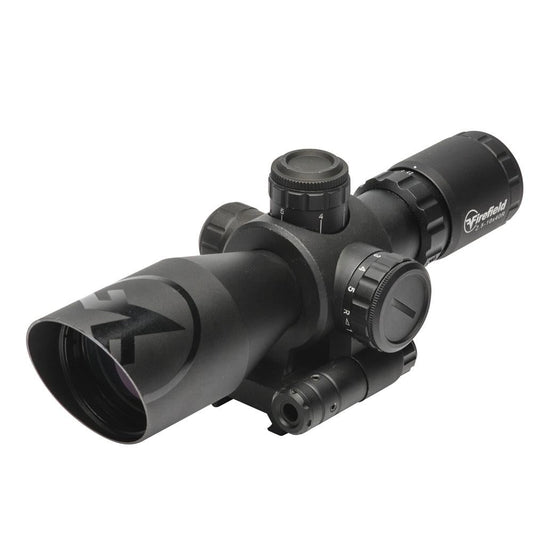

Firefield Barrage Rifle Scope - 2.5-10x40mm Red Laser Mil Dot Reticle delivers precise targeting with its adjustable magnification range, perfect for both close and long-range shooting. The robust aircraft-grade 6061-T6 aluminum construction ensures durability, while the fully multi-coated AR green glass enhances clarity in low-light conditions. Enjoy a battery life of up to 100 hours, allowing for extended use without interruptions. This rifle scope is designed to improve accuracy, making it an ideal choice for serious shooters.
Featuring a user-friendly red/green Mil-Dot reticle, this scope offers optimal visibility in various lighting conditions. The quick elevation adjustments are specifically tailored for .223 ammunition, ensuring that every shot is accurate. With the Firefield Barrage, you’ll have the tools needed to elevate your shooting experience, focusing on performance without distractions.
Key Features:
- VARIABLE MAGNIFICATION for adaptable targeting from 2.5x to 10x.
- RED/GREEN RETICLE ILLUMINATION for enhanced visibility in any lighting conditions.
- PRECISION WINDAGE & ELEVATION ADJUSTMENTS for accurate shooting up to 500 yards.
- TOUGH ALUMINUM CONSTRUCTION ensures durability in the field.
- LONG-LASTING BATTERY LIFE with 100 hours of operation on a single charge.
- SCRATCH-RESISTANT LENS for clear sight in adverse conditions.
- IPX4 WATERPROOF RATING protects against rain and moisture.
- BULLET DROP COMPENSATION RETICLE tailored for .223 ammunition accuracy.
Technical Specifications Table
| Specification | Details |
|---|---|
| Magnification | 2.5-10x |
| Lens Diameter | 40mm |
| Weight | 1.5 lbs |
| Dimensions | 13.5 x 3.5 x 3 inches |
| Material | 6061-T6 Aluminum |
What’s in the Box?
- Firefield Barrage Rifle Scope
- Lens Covers
- Padded Case
- Neck Strap
- User Manual
Customer Reviews
“Absolutely love the clarity at 10x. It’s perfect for my long-range hunting.”
“Super tough and reliable, even in the rain. Highly recommend!”
“The reticle is bright and easy to see. This scope has improved my accuracy significantly.”
FAQ
How does the Firefield Barrage perform in low light? The fully multi-coated AR green lenses provide excellent light transmission, ensuring that the Mil-Dot reticle remains visible even in dim conditions, making it perfect for early morning or late evening shooting.
Can the scope withstand harsh weather conditions? Yes, with an IPX4 waterproof rating, the Firefield Barrage is designed to resist moisture and rain, providing reliable performance in various environments.
Similar Models
Looking for the perfect upgrades? Explore our extensive Firefield lineup, including models like the Firefield 4-12x50 Tactical Scope for enhanced magnification and the Firefield 1-4x24 for faster target acquisition. Discover the full collection for exceptional optics tailored to your adventures.
You May Also Like
Here’s some of our most similar products people are buying. Click to discover trending style.






